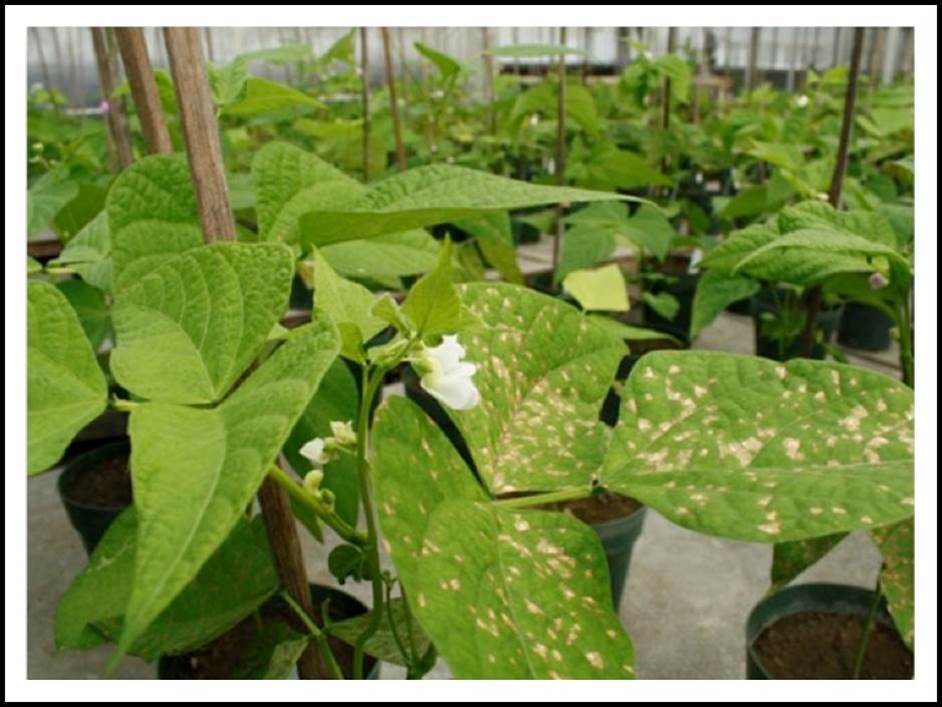Disease resistance in common bean
Contact person: Michelle Nay
Partners: Bodo Raatz, Bruno Studer
Project description: Common bean (Phaseolus vulgaris L.) is the most important grain legume for human consumption and a staple crop for many poor smallholder farmers in Eastern Africa and Latin America, contributing a significant amount of protein and micronutrients to their diet. However, common beans are frequently affected by diseases, which can reduce yield dramatically. For example, angular leaf spot (ALS) can cause yield losses as high as 80% (Schwartz et al., 1981). Particularly smallholder farmers with limited access to pesticides and fertilizer suffer most from such losses. Therefore, breeding for resistant cultivars is the most ecological and economical mean to control diseases in low input agriculture, and particularly important to maintain stable yields of smallholder farming systems in developing countries.
This project aims at resolving the genetic basis of the common bean diseases ALS and ascochyta as well as targeting resistance genes by molecular markers to improve breeding efficiency.
Breeding for ALS has proven difficult by the high pathogenic diversity and specificity of its pathogen Pseudocercospora griseola. Using a bean panel comprising the 55 most efficient ALS resistance sources, complemented with recent breeding material, we will evaluate disease resistance with various pathogens in the greenhouse and in field experiments in Colombia and East Africa. Genotyping by sequencing and genome wide association studies will be conducted to identify resistance loci specific for each pathotype.
Despite substantial breeding efforts, ascochyta resistance could not be achieved in common bean, but can be introgressed from Phaseolus dumosus, a species of the secondary gene pool. QTL analyses will allow identifying and characterizing first sources of resistance and making them available for breeding.
Targeting ALS and ascochyta resistance loci with molecular markers will allow efficient handling and introgression of these traits into advanced breeding germplasm, thereby combining high grain quality with stable yields. On a broader perspective, our results provide the basis for efficient spacial and temporal management of resistance sources in elite cultivars to achieve durable resistance.
The project presented here will be conducted in the frame of an Engineering for Development (E4D) scholarship granted to Michelle Nay, in collaboration with Dr. Bodo Raatz from our partner institution Centro Internacional de Agricultura Tropical (CIAT), Cali, Colombia.
References:
Keller, B., Manzanares, C., Jara, C., Lobaton, J.D., Studer, B., and Raatz, B. (2015). Fine-mapping of a major QTL controlling angular leaf spot resistance in common bean (Phaseolus vulgaris L.). Theoretical and Applied Genetics 128, 813–826.
Schwartz, H.F., Correa, V.F., Pineda, P.A.D., Otaya, M.M., and Katherman, M.J. (1981). Dry bean yield losses caused by Ascochyta, angular and white leaf spots in Colombia. Plant Disease 65, 494 – 496.
